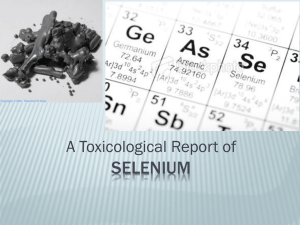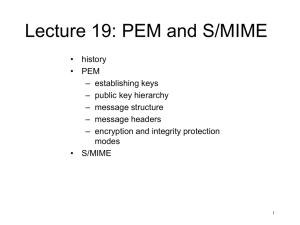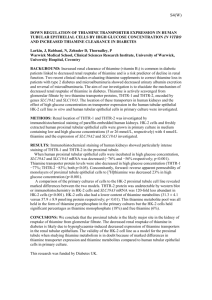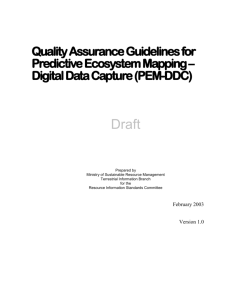Vitamins and Minerals
advertisement
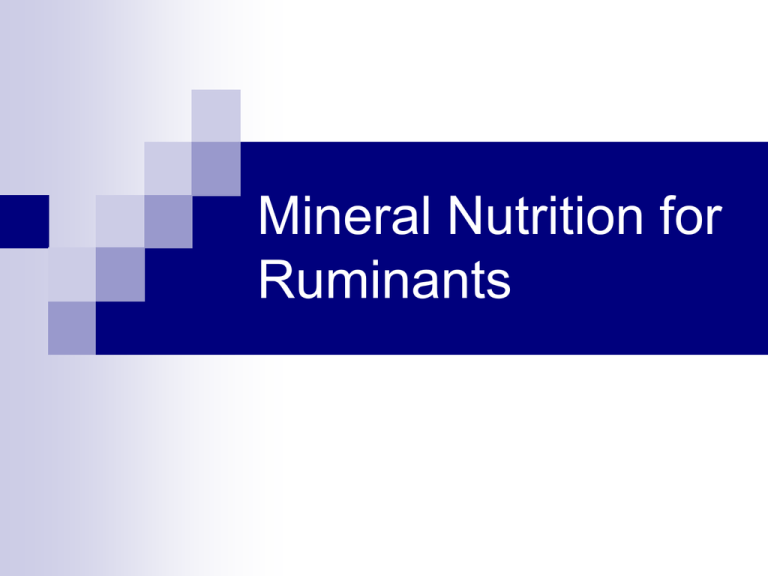
Mineral Nutrition for Ruminants Major Minerals Major (macro) minerals Ca, P, K, Mg, Na, Cl, S Included as % in diet Functions Structural Nerve Electrolytes Osmotic balance Trace Minerals Trace (micro) minerals Cobalt, copper, iodine, iron, manganese, molybdenum, selenium and zinc all required Chromium-no established requirement Included as ppm or ppb in diet Function Enzyme co-factor or component Mineral Deficiencies Milk Fever Metabolic disease at/after parturition in dairy cows Rapid in serum Ca because Ca is lost to colostrum secretion Symptoms included lack of appetite and paralysis Treatment is intravenous Ca borogluconate Milk Fever Prevention Include anionic salts in diet for 3-5 wks prior to parturition + K+) – mEq(Cl- + SO4-) Normal diet: +20 to +30 mEq/100g diet (electrolyte balance) Anionic diet: -7 to -25 mEq/100g diet mEq(Na+ Induces mild acidosis, which increases tissue responsiveness to PTH Ca release from bone to serum Grass Tetany Hypomagnesemia in ruminants Usually following lush spring growth Fertilizing with K or N make it worse Symptoms include muscular twitching, collapse, convulsion Treatment is IV Mg gluconate Prevent with high Mag mineral (MagOx) Copper, sulfur and molybdenum High sulfur & molybdenum thiomolybdates Cu + thiomolybdates insoluble complexes Thiomolybdates can result in reduced Cu absorption and systemic metabolism NRC, 1996 Cu Adequate Cu Def icient Cu Def icient + Mn 1.8 1.6 Plasma Cu, mg/L 1.4 1.2 1 0.8 0.6 0.4 0.2 0 0 114 183 241 297 Calf day of age 422 459 490 Mineral Toxicosis Maximum Tolerable Levels for Ruminants Copper Toxicosis Sheep particularly sensitive to copper 5 ppm Cu Excessive Cu builds up in RBC, causing Heinz-body formation and methemoglobin production Can’t bind oxygen-chocolate blood Release of hemoglobin damages kidneys Avoid feeding cattle mineral Copper Toxicosis Treatment IV methylene blue to control metHb Copper chelators D-penicillamine Ammonium tetrathiomolybdate Cu:Mo ratio of 10:1 or less Sulfur Toxicity in Ruminants Dietary sulfate reduced to H2S (gas) Eructate-reinhale Toxic in high amounts Polioencephalomalacia (PEM, brainers) Brain lesions due to S toxicity Polioencephalomalacia (PEM) Terminology Clinical signs Polio = gray matter Encephalo = brain Malacia = tissue death Subacute – head pressing, circling, ataxia, staggering, blindness, depression, stupor Acute – blindness, seizures, comatose Can be caused by thiamine deficiency, lead or salt poisoning and high sulfur diets S induced PEM Does not appear to be caused by thiamine or copper deficiency No alterations of thiamine or its mono- and diphosphate esters in whole blood, brain, cerebrospinal fluid, or liver (Sager et al., 1990; Gould et al.,1991) Thiamine treatment can help reduce symptoms Increase energy availability to the brain plays a key role in the tri-carboxcylic acid cycle and pentose shunt Thiamine-supplemented groups also manifested PEM, even though clinical signs were not observed (Olkowski et al., 1992). 60% of ruminal gas that is eructated is inhaled Pka of HS- = 7.04 S Induced PEM Oxidative Stress Reactive oxygen species Byproduct of cellular respiration Roles in cell signalling Dangerous in excess Species Hydroxyl Superoxide Hydrogen peroxide Oxidative Stress Effects DNA damage Lipid peroxidation (oxidation of polyunsaturated fatty acids) Inactivation of some enzymes (oxidation of metal cofactors) Antioxidant Capacity Superoxide dismutase Superoxide anion to hydrogen peroxide Copper-Zinc SOD-cytosol Manganese SOD-mitochondria http://en.wikipedia.org/wiki/Superoxide_dismutase Antioxidant Capacity Catalase Hydrogen peroxide to water and oxygen Consists of 4 parts, each containing a heme (iron) group Antioxidant Capacity Glutathione peroxidase Hydrogen peroxide to water Selenium dependent enzyme-4 selenium atoms per molecule Iodine Function- part of thyroid hormone (metabolism rate) of body I- is in thyroid T4 (thyroxine) T3 (triiodothyronine)-3 times more active than T4 Controls rate of energy metabolism in cells 70-80% Iodine Deficiency “goiter” enlarged thyroid gland Plants have “goitrogens” (goiter creating), block use of iodine Reduced growth Impaired reproduction-dead, weak or hairless young Goiter in lamb Selenium Regulated by the FDA, because relatively low levels toxic (i.e. 10x requirement) Function Glutathione peroxidase (antioxidant) Iodothyronine 5’-deiodinase-1 (T4 conversion to T3) Selenium Deficiency Deficient in many areas of U.S. Muscular dystrophy Sheep-white muscle disease Reproductive problems such as retained placenta and low fertility, weak newborns Cobalt Essential component of B12 Required by ruminants Rumen microorganisms synthesize B12 from cobalt B12 dependent enzymes Methylmalonyl-CoA mutase Methionine synthetase







